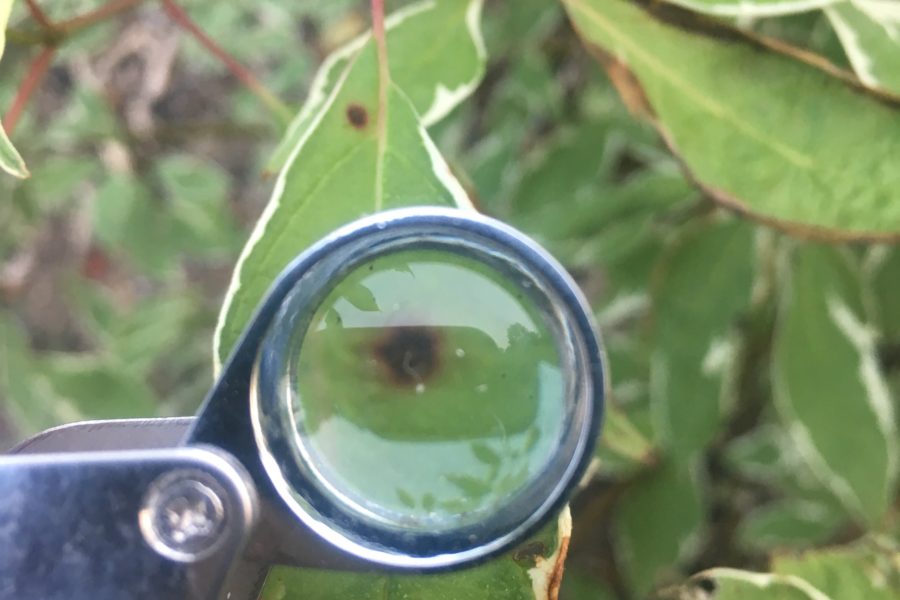I’ve recently purchased a small hand lens with a 10X magnification capability. The focal length is one inch. In order to view subjects through the hand lens clearly you must, for all intensive purposes, bury your face into or against the subject matter, forcing a closeness in observation that was, prior to my purchase, an uncommon engagement for me.
But I’ve come to learn that microscopic vision in arboriculture is a superpower.
When clients call for a visit to diagnose disorders or request a bid, I do not hesitate to pull out my hand lens and immediately take a closer look at my subject, whatever it may be: leaves, twigs, bark or frass. It’s a good opportunity to establish a tenured air-an old chap diving into the field work.
I have rejoiced that this newly founded focal length of my hand lens has unlocked new worlds for me. And with all due respect, I owe the glory of this ten-dollar purchase to my recent reading of the wonderful natural history writer David George Haskell, who in his accounts of nature, builds a strong case for the importance of magnifying the seemingly tiny world around us in order that we may find a certain magical grandeur. And that I have.
Looking at a gypsy moth the other day, I observed that some the color patterns of blue and gold reminded me of the tie-dyed splatter of coleus plants. Variegation entwined with variation. From a distance the colors of the body blend, but at one inch away you see they are brilliantly individual, and separated as definitively as thunder and lighting. All that noise on just one caterpillar.
Now, I’m always scrambling for things to look at: a recent silk house in a red bud built by the first waves of webworms, decaying wood chips on a property line, sporochodia on a peach, a leaf spot boiling in the humid morning dew. My double braid rope is unfathomable, the underside of a leaf at that range is but a hundred more pieces and plates, a leaf hopper is as beautiful as an alien up close.
You know, I can remember being scolded when I was a youngster watching cartoons, “you’re too close to the T.V.!” Now I say to my son watching cartoons, “you’re too close to the iPad!” How our experiences are ripples through time! We are constantly saturated with the media of today, thinking it connects us to something deeper than words and noise. Although it may bring us closer to some relevant information, the pixel screen inherently steals something that the hand lens does not. Time to go outside.
We can magnify the natural world by getting a little closer to it. Bending down, or crouching under, or hopping up in to peer down on to. As I move closer to nature with my hand lens, one hundred more worlds come into focus. Therefore, I remind myself to shut down and sign off and go crawl around a root collar somewhere in search of an egg mass buried in a bark furrow, or some shoe-string fungus writhing like a fiberoptic forest cable, carrier of the highest speed network.
From one inch away, suddenly everything comes into focus. The magnification is ten times greater, but the beauty goes on to compound exponentially.





Leave a Reply
Your email is safe with us.